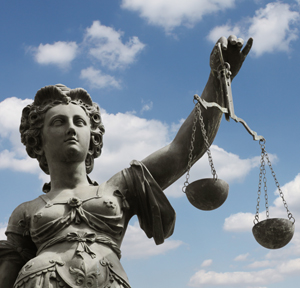Legal
Trustee In Madoff Case Files Motion For Second Distribution To Victims

The SIPA trustee for the liquidation of Bernard L Madoff Investment Securities has filed a motion in the US Bankruptcy Court for the Southern District of New York seeking approval for a second distribution of customer funds.
The SIPA trustee for the liquidation of Bernard L Madoff Investment Securities has filed a motion in the US Bankruptcy Court for the Southern District of New York seeking approval for a second distribution of customer funds, and an allocation of around $5.5 billion recovered assets to the customer fund.
The motion asks for a distribution of between approximately $1.5 billion and $2.4 billion from the customer fund to customers with allowed claims. If made, this distribution would bring the funds returned to BLMIS customers to at least 46 per cent of allowed claims, the trustee said, and up to 50 per cent.
The motion for a second distribution follows a decision by the US Supreme Court not to review the net equity calculation formula in the liquidation procedure. The formula determines customers’ eligibility for pro rata distributions with allowed claims from the customer fund, based on “cash-in, cash-out” of Madoff’s scam. The Bankruptcy Court’s approval of the methodology was appealed, but the Supreme Court’s decision ended that appeal process.
Following that, on July 16, the deadline for further appeals on the Picower forfeiture of some $7.2 billion to the US government expired, making the forfeiture order final. This released $5 billion of Picower settlements funds to the trustee, “a portion” of which will go toward this distribution, Irving Picard, the SIPA trustee, said. Jeffry Picower, now deceased, was a long-time investor with Madoff.
“The denial of certiorari by the Supreme Court and the release of the Picower settlement funds are great news for BLMIS customers and we will move quickly to make the distribution,” said Picard.
However, obstacles remain. For a start, a large portion of allocated funds (to the customer fund) need to be reserved until certain objections are resolved, such as relate to inflation and interest rate adjustments to claim amounts, as well as appeals to other settlements. According to an update from the trustee in June, appeals over the $1.025 billion Tremont settlement and the $220 million settlement with the Norman Levy family still need to be resolved. In addition, the IRS settlement requires a $103 million settlement reserve. Further reserves are also needed until litigation over 237 claims, which may become allowed claims, are resolved.
“Time-based” damages
“We continue to grapple with issues, mostly objections, that seek to redirect funds that could be going to approved claimants now,” said David Sheehan, chief counsel to the SIPA trustee. “An objection that in particular affects the amount of the second interim distribution is the question of whether claimants are entitled to ‘time-based damages,’ which are payments based on the time elapsed while customer monies were deposited with BLMIS.”
Currently, 1,240 objections have been filed related to time-based damages, relating to an existing New York state statutory rate of 9 per cent, inflation, or other damages calculations, the trustee said.
“These arguments are specious at best,” said Sheehan. “The Securities Investor Protection Act does not provide for interest or inflationary adjustments and no basis in common law exists either. In addition, time-based damages run afoul of the court rulings on net equity, because those payments would come at the expense of ‘net losers,’ who have not yet recouped their initial BLMIS principal investment.”
The trustee could distribute over $3 billion if time-based objections were withdrawn, said Sheehan, as opposed to $1.5 billion if it is forced to maintain reserves to cover the maximum 9 per cent interest rate. This is the difference between 42 per cent of each allowed claim (unless already fully satisfied) and 20.5 per cent, he said.
Given that a 9 per cent interest rate “is unrealistic in the current economic environment and would not likely be approved by any court,” the trustee is seeking permission from the Bankruptcy Court for reserves based on a 3 per cent interest rate.
If approved, this would bring the second distribution to around $2.5 billion (hence the $1.5 - $2.4 billion estimation, depending on either a 9 per cent or 3 per cent interest rate calculation for reserves). Which rate will be used depends on whether third parties file objections to the 3 per cent interest rate, and whether any such objections are resolved before the entry of an allocation and distribution order.
“Additional, significant interim distributions are still ahead for the victims of the Madoff fraud,” said Picard. “We anticipate recovering more stolen assets through litigation and settlements. Final resolution of disputes will permit us to reduce reserve amounts and distribute those funds to customers in the future. As these uncertainties are resolved, we will seek authorization for further allocations and distributions as quickly as possible.”